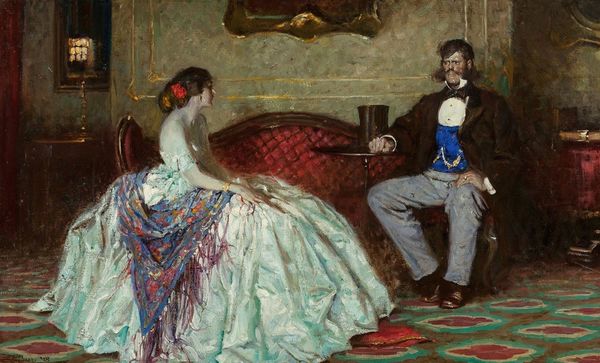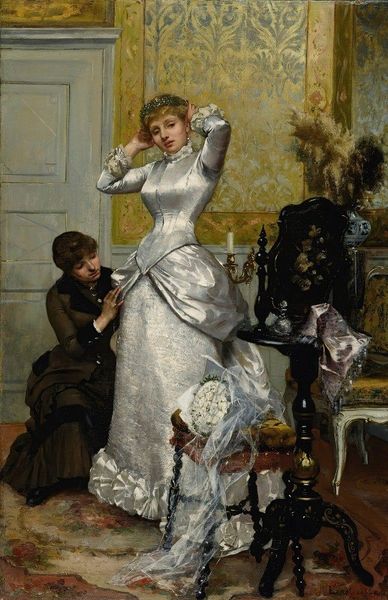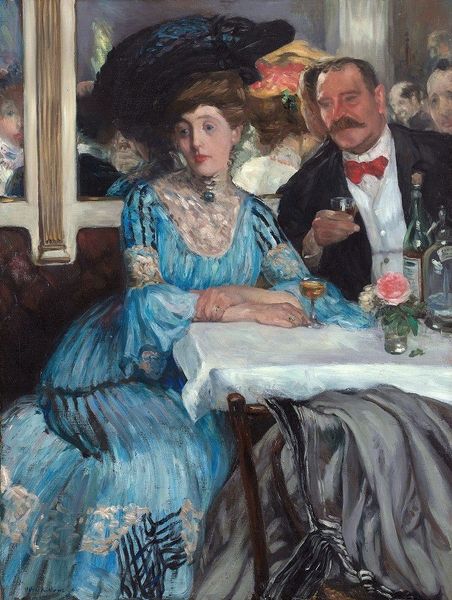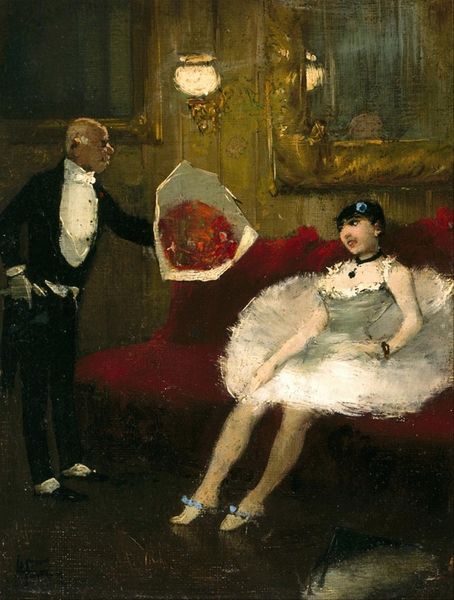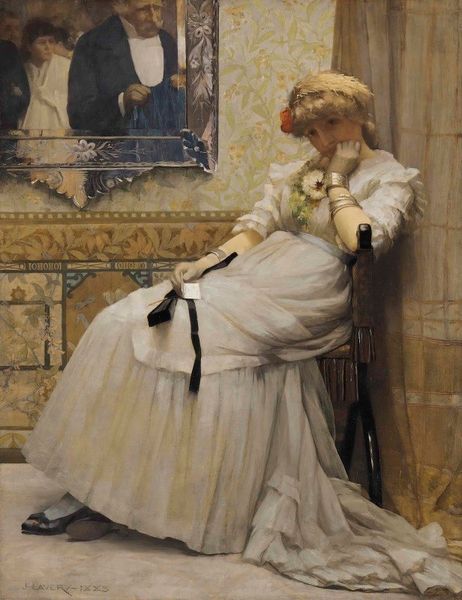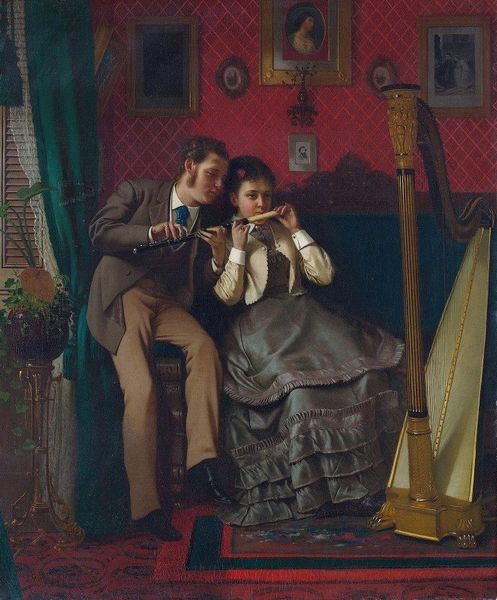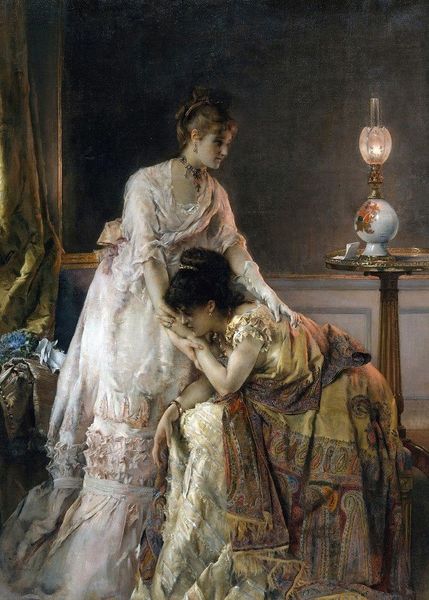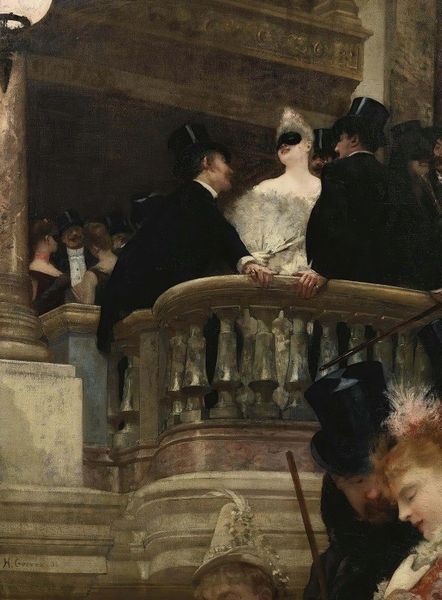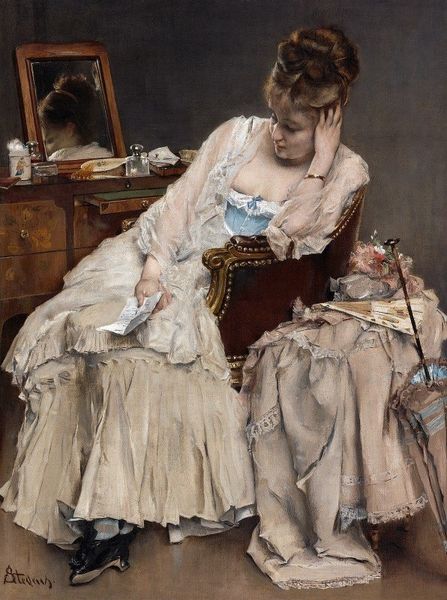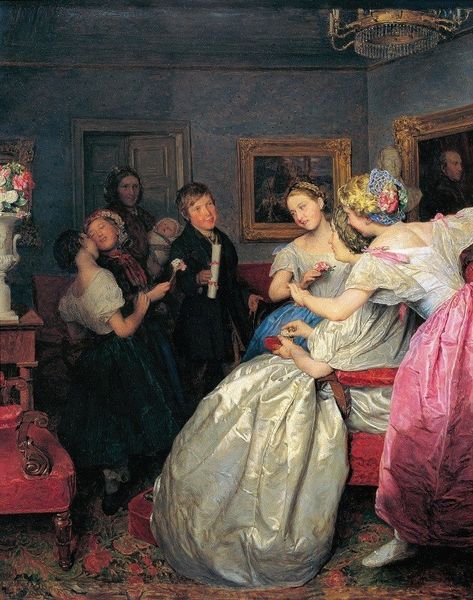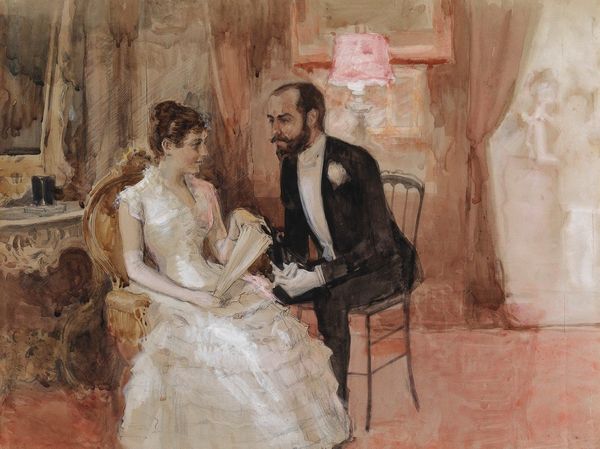
painting, oil-paint
#
portrait
#
gouache
#
figurative
#
painting
#
impressionism
#
painting
#
oil-paint
#
figuration
#
oil painting
#
intimism
#
genre-painting
Copyright: Public Domain: Artvee
Curator: Here we have Henri Gervex’s oil painting "Nana," a snapshot into Parisian society. Editor: There’s something unsettling about it, almost claustrophobic. The cool blues of the wall feel distant, while the figures are crammed into this intimate space. Curator: The painting created quite the scandal when it debuted, leading to its removal from the Salon. The narrative connects it to Emile Zola's novel of the same name, centering on the life of a courtesan. What stands out is the unflinching depiction of a specific social class and its mores. Editor: It's fascinating how Gervex has captured textures here—the rough brushstrokes implying the fabric of the dress, the polished gleam of the gentleman's shoes. But there's also this stark contrast between the soft light on Nana and the dark tailoring of the man. It’s almost as though she's being objectified, commodified. The whole scene feels constructed. Curator: Absolutely. One reading focuses on how the art world, then as now, both reflects and perpetuates societal norms. The act of looking itself, represented by the male figure observing Nana, reinforces existing power structures. He is the consumer, she is the consumed. It's a calculated portrayal designed to critique bourgeois morality. Editor: I'm especially drawn to the presence of the seamstress. Her inclusion isn't just about setting the scene but reminding us of the labour, the material production behind the beautiful artifice. We forget that a material process lies beneath an Impressionist moment, that gowns are not made by magic! Curator: True. "Nana" invites reflection on more than aesthetics, and makes us ask questions about societal roles. Editor: Looking again, it is impressive that the artwork succeeds as commentary on class, labor, and gender through something as material and straightforward as oil and canvas.
Comments
No comments
Be the first to comment and join the conversation on the ultimate creative platform.

